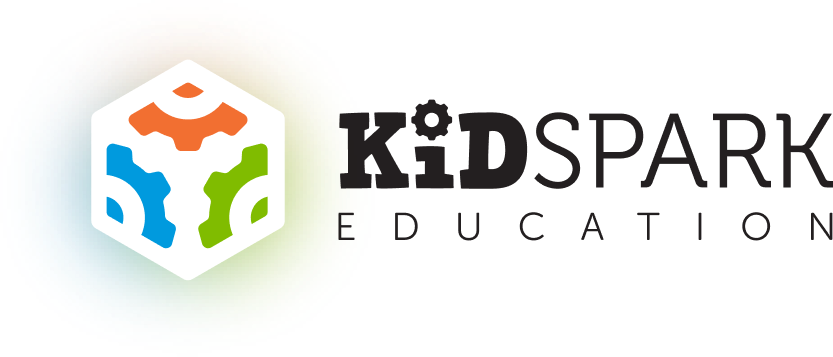
As STEM education continues to evolve, we’re tracking the latest trends.
As the educational crisis continues, many teachers and other educators across the country are focusing their efforts on engaging students with STEM (science, technology, engineering, and mathematics). Since these subjects are ever-changing and heavily influenced by technological advances, it’s important to stay in the know with the latest trends.
Below we break down the top ten trends in STEM education we’re following this year.

Focus on Inclusivity, Diversity, and Equity
STEM careers have historically lacked a diverse workforce, although that has seen improvement in the past decade, and this continued shift will be a key focus throughout the rest of the year. According to a report by the National Science Foundation (NSF) and National Center for Science and Engineering Statistics (NCSES), “underrepresented minorities—Hispanics, Blacks, and American Indians or Alaska Natives—represented nearly a quarter (24%) of the STEM workforce in 2021, up from 18% in 2011.” According to that same report, men represented 65% of the STEM workforce in 2021 while women only represented 35% of the workforce.
While these numbers show a trend of improvement, there are still large disparities in representation in the STEM workforce. One key way to address this issue is to establish equity in STEM education, bringing students of different backgrounds on to a level playing field when it comes to a future in STEM.
At Kid Spark Education, we believe the following: “By giving students of all backgrounds and abilities an equal chance to learn and love STEM, we are nurturing a next generation of successful professionals, bold thinkers, and passionate leaders.”
Forbes reported the importance of creating a sense of belonging in the STEM community, particularly in those classrooms where students are first exposed to STEM. Students who learn in an atmosphere where they are confident and feel like they belong may be more likely to overcome their anxieties about STEM and see a future in the field. Frameworks and programs like the ones created by Kid Spark Education can help promote that strategy.
Overcoming Teacher Shortages
Even before the COVID-19 pandemic, teacher shortages were making headlines across the country. The stress and impact of the pandemic only worsened these shortages, and now the STEM education community is finding unique ways to overcome this challenge.
UTeach at the University of Texas at Austin, a program that focuses on preparing more STEM teachers quickly, stated, “The number of science and mathematics teachers coming from the country’s teacher preparation programs has been falling for years due to the drop in production from the nation’s universities.” UTeach prepares new educators who are making a career change to become a STEM teacher, focusing on individuals who already hold a STEM degree. This program and programs like it allow potential new teachers to earn credentials quickly while tapping into a different market of potential educators.
It’s no surprise that the groups working on the STEM teacher shortage approach the problem with analytical strategies, just like those strategies that STEM educators bring to the classroom. Organizations like Beyond100K (formerly 100Kin10) quantify the problem as they work with a network of education organizations to attempt to add 10,000 more STEM teachers every year, according to EdWeek.

Grants Funding for STEM Programs
With teacher shortages and a focus on equity in mind, it’s no surprise that another STEM education trend for this year and beyond is increased grants and funding for STEM programs. STEM education is hands-on and often requires specific technology—which doesn’t come cheap. Thus, many schools find it out of their reach to fit STEM education into their tight budgets.
Educators and administrators can look to the U.S. Department of Education for a guide to finding discretionary funding for STEM education, with those funds coming from both government programs and other independent sources.
In their December 2018 report, the Committee on STEM Education of the National Science and Technology Council acknowledged the importance of this type of support, saying “The Federal Government has a key role to play in furthering STEM education by working in partnership with stakeholders at all levels and seeking to remove barriers to participation in STEM careers, especially for women and other underrepresented groups.”
Kid Spark Education has its own curated grant program, the Kid Spark Education STEM Equity Grants Program, which Title 1 schools can apply for. If awarded a grant, the program provides all the supplies the educators need to successfully implement STEM programs. The grant application is open to U.S. public Elementary, Preschool, and Head Start programs serving Title 1 students in grades Pre-K through fifth grade.
Robotics Learning Programs and Competitions
As students progress through STEM learning, they dive into more complex subjects like robotics, which put together multiple concepts central to STEM. A report from the International Journal of STEM Education concluded that “students will understand the concept of STEM more deeply by engaging with robots.” Robotics STEM education does require dedicated supplies, though, so often is out of reach of newly implemented STEM programs.
In 2023, we expect to see growth in the use of robotics in elementary and middle school STEM learning. Robotics can be used to teach more than one objective in a single project, while providing a hands-on experience for those students who learn better by doing.
Robotics STEM labs and learning programs can benefit students of all skill levels. As outlined by Kid Spark Education, some of those benefits include:
- Development of critical problem-solving skills
- Building resilience
- Encouragement of team building and collaboration
- Advancement of computational thinking skills
Students can take their robotics projects to the next level by entering the growing number of robotics competitions, including Student Robotics and World Robot Olympiad. These competitions provide a continuation of education outside of the classroom, plus a fun opportunity for students to pursue extracurricular activities.

Addressing Global Demands and STEM Scores
The future is global, with continued connections across borders only growing while competition for jobs and innovation deepens. Central to that competition is STEM education, which serves as a fundamental building block to how competitive a country like the United States can be.
The Center for Strategic and International Studies recently reported how the United States has been lagging behind and even declining when it comes to STEM proficiency compared to the rest of the world, and this could present long-term implications for not only individuals but also the nation as a whole. STEM affects fields including security, healthcare, technology, and engineering. If these deficiencies continue, more than one industry could see a critical skilled labor shortage.
Additionally, student test scores have shown a significant drop in the United States in the post-COVID era. There has already been much discourse regarding how the United States stacks up when it comes to STEM education compared to the rest of the world, and these falling scores only underscore that concern.
STEM Workforce Demands
Another trend to explore further are those future expectations for the STEM workforce, which are of particular concern when considering global demands. The U.S. Department of Labor projects that the number of STEM jobs will increase by 10.8% between 2021 and 2031, which is about twice as large of an increase as non-STEM occupations.
STEM careers include jobs in dedicated STEM industries, like engineering, but also STEM positions in other industries. For example, a logistics company that handles shipping goods will still have STEM employees like cost estimators, financial analysts, and information technology specialists. Nearly every company will find the need for STEM employees once they reach a critical size.
A few examples of STEM occupations include:
- Scientists
- Web and software developers
- Healthcare professionals
- Information technology specialists
- Engineers
- Actuaries
- Data scientists
- Computer network architects
- Cartographers
- Cost estimators
- Statisticians
- Financial analysts
- And more

Embracing STEAM
STEM stands for “science, technology, engineering, and mathematics,” but have you ever heard of STEAM? STEAM stands for “science, technology, engineering, the arts, and mathematics,” adding in art to the list of subjects. STEAM incorporates the arts and gives importance to less science-focused disciplines in education.
The University of San Diego outlined the importance of the arts in education, stating, “The addition of the ‘A’ (The Arts) to the original STEM discipline to create STEAM is important in part because practices such as modeling, developing explanations and engaging in critique and evaluation (argumentation), have too often been underemphasized in the context of math and science education.”
STEAM education does not need to replace or cancel out STEM education. Instead, it can provide a supplemental way of approaching problems and learning, allowing students to express their creativity and further hone that skill into creative problem solving.
Support for Alternative Learning Methods
At its core, STEM education supports students who learn in different ways, as STEM often relies on project-based learning strategies that challenge students to approach the task in different ways. For example, students may start a STEM lab by researching what kind of parts they need, then work together to solve math problems that are part of the lesson, and finally put together a physical model.
There are traditionally considered to be four major learning types: visual, auditory, reading/writing, and kinesthetic. While many STEM projects obviously lend themselves to kinesthetic learning in unique ways, all learning styles can be integrated into successful STEM programs.
A continued trend in education is the exploration and support of different learning types, even beyond those four major types. Now more than ever, educators are considering that students may learn best in a variety of ways outside of traditional classroom methods, and that compassion will be implemented into STEM programs as they evolve and expand.
Gamification of Learning
Students who require alternative learning methods may appreciate the use of interactive games. Gamification is the use of game methods and systems in non-gaming environments, such as education, with the goal of making the applicable tasks more engaging and motivating.
With gamification, as Construction Placements explains, students can compete with each other or just themselves to earn points and badges. The game itself may be something formal, like a computer program, or something that the teacher creates to encourage students to complete their lessons, like a custom bulletin board marking the class’s progress through a lesson.
Gamification can also make a student’s progress visible, which can help the student celebrate their own success—and it can also make it easier to note when a student is falling behind in a packed classroom.
The day-to-day of a student can be monotonous, which can cause disengagement on the part of the student. Gamification of STEM education can help make students advocates for STEM, too, as they embrace knowledge with enthusiasm rather than dread.

Artificial Intelligence in STEM Education
Nothing has been in the news more lately than artificial intelligence (AI). Many applications of AI in education are still in their early stages, as are many commercial uses of AI, but they show promise for the future.
STEM Education Journal highlighted the following uses of AI in STEM education:
- Learning Prediction - Modeling can predict student performance and status through AI-powered algorithms.
- Intelligent Tutoring System - AI can provide feedback and personalized learning to students.
- Student Behavior Detection - AI can track student learning behaviors, characteristics, and patterns.
- Automation - Tools can automatically grade projects, assess performance, and generate tasks for students and educators.
- Robotics - Educational robots can be used to teach STEM subjects such as programming.
All of the disciplines within STEM are fast-moving, so it can be nearly impossible for educators to keep up. AI offers the potential to help optimize some of the tasks educators must do while keeping them in front of the latest developments in STEM education.
Stay Informed with Kid Spark Education
If you’re looking to refresh your STEM programming in 2023, count on Kid Spark Education to provide you the resources and support to do so. Create an account to explore sample STEM curriculum, or contact our team today to learn more about our programs.
Comment below to let us know if we missed any trends in STEM education for this year. What are you most looking forward to when it comes to education?

